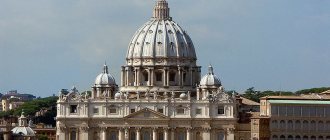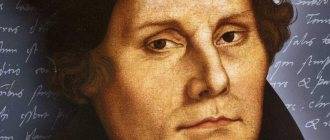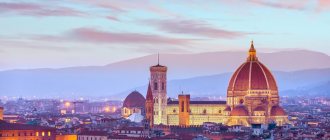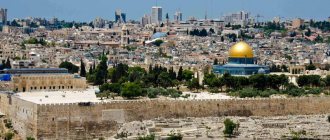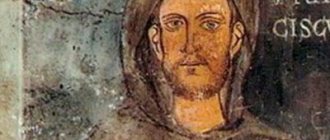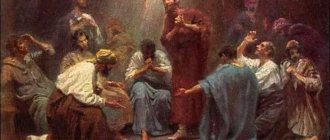Priest (presbyter)
Above the deacon in the hierarchy of the Catholic Church are priests. To become a priest, a deacon must undergo the rite of ordination. Thus he is ordained to the priesthood. During the ceremony, the initiate promises to perform the duties of the priesthood and obey his superiors. When a person becomes a priest, he can celebrate the Eucharist, confess and anoint the sick. Priests can also officiate holy matrimony. Catholic priests are divided into two types.
These are diocesan and religious priests. The diocesan priest has his own parish, which he heads. There the priest serves the people and receives a monthly salary for it. Their food and housing are provided by the parish. Diocesan priests may wear any clothing outside of service. This type of priest is more common in secular countries without a strong traditional Catholic population. At the same time, religious priests make vows to a religious order.
For example, such an order are the Jesuits. They are required to wear religious clothing and take additional vows, such as poverty and obedience. Religious priests cannot have personal property; they own almost nothing. Typically, religious priests live in groups in one house belonging to the order. They don't receive a salary. These priests must strictly obey the orders of their superior.
HIERARCHY
In accordance with the basic ecclesiological dogmas, members of the Church are divided into 2 main categories. The first category consists of those called by the Holy Spirit through ordination to perform church service: preaching, teaching the sacraments, taking care of the external structure of the temple - these are clergy. The second category consists of the laity, who are also participants in church life: they take part in church teaching, but only with the blessing of the clergy and, as a rule, not from the pulpit, in worship - with their prayers, in church administration, for example. at the disposal of church property, but under the direction of clergy of different degrees depending on the position occupied by the layman. The clergy are divided into higher, or clergy, degrees of which together constitute I., and lower, or clergy, who are not classified as I., - these are the reader, choirboy, subdeacon, paramonar (sexton), they serve at performing worship in the temple; in the present In the Russian Orthodox Church there were only 2 degrees of clergy left - subdeacon and reader.
The hierarchical priesthood is a divinely established institution. From the very beginning, the Church has known 3 degrees of sacred priesthood: episcopal, presbyteral and deaconal. Bishops are the successors of the apostles, having a gracious connection with them through a series of ordinations. These are archpastors, high priests and highest teachers of their Churches. The presbyter, by virtue of his authority received from the bishop, can perform all sacred rites, except for the consecration of the antimension and the consecration of the world, as well as consecration and ordination, with the exception of presbyters in charge of monasteries, who can supply subdeacons and readers for their monasteries. Presbyters teach the people the dogmas of faith and piety, and provide pastoral care for the Christians entrusted to their care. Deacons assist bishops and presbyters in the performance of their ministry by participating in the performance of sacred rites in the church, including the altar. At the same time, according to the 39th Apostolic Canon, “presbyters and deacons do nothing without the will of the bishop. For the people of the Lord have been entrusted to him, and he will give account for their souls.”
The three degrees of the priesthood are of apostolic origin, and they will remain until the end of the age. The Church does not have the power to abolish any of them, nor can it increase the number of sacred degrees.
In some, and even very authoritative, Orthodox Churches. The books reflected different ideas about the boundary between the degrees of lower and higher clergy than those that have become generally accepted in the present day. time. Thus, in the “Orthodox Confession” of St. Peter (Grave) (1662) distinguishes between the highest and lowest degrees of the priesthood. He includes the highest ones as episcopal and presbytery, and the lowest - the degrees of deacon, subdeacon, priest, singer and reader, in other words, the lowest sacred degree - deacon and clergy ranks. In his work, St. Peter (Tomb), in essence, repeats the Catholic one. classification of the priesthood. Catholics distinguish in the hierarchy of sacred rites priests (bishops and presbyters) and ministers (deacons, subdeacons, acoluths, exorcists, lectors and ostiarii), and according to special canonical obligations (for example, celibacy) - higher and lower degrees, ranking bishops as the highest, presbyters, deacons and subdeacons, and to the lower level the rest of the clergy (after the Vatican II Council the lower ranks were partially abolished). In Orthodox Church deacons, as well as lower clergy, are not independent performers of divine services; ordained subdeacons, in the absence of mandatory celibacy, cannot, like clergy, enter into marriage after ordination. It would seem that there are circumstances that can serve as a basis for the classification borrowed by St. Peter (Mogila) from the Catholic. rights. But for what is generally accepted in Orthodoxy. The division of the Church into higher and lower clergy, into degrees of sacred I. and clergy, passing between deacons and subdeacons, is a strong dogmatic basis: the 3 degrees of sacred I. are divinely established institutions, go back to the apostolic age and will remain in the Church until the end of the world, and the degrees lower clergy - clergymen - were established by the Church in the course of its history and were abolished in the course of this history. Thus, the rank of subdeacon became known in the Church no earlier than the 3rd century; The very fact that the Church did not know him from the beginning does not allow this rank to be attributed to the divinely established degrees of sacred I.
Priests belonging to I. receive the grace of the priesthood after their election in relation to bishops by the episcopal council (in the Russian Orthodox Church at present by the Holy Synod), and in relation to presbyters and deacons by the ruling bishop, through the sacrament of the Priesthood, or ordination performed in the altar for Divine Liturgy. The participation of elders, deacons, lower clergy and laity in the election of candidates for the priesthood of various hierarchical degrees in different eras of history and in different local Churches was a transitory and changeable factor, in contrast to the participation of bishops, which at all times of church history was of decisive importance.
The power to perform ordination to all 3 degrees of the sacred I. belongs to the bishops, and only to them, as the successors of the saint. apostles One of the conditions for the validity of consecration is Orthodoxy. confession of its perpetrator. If the bishop who performed the consecration belongs to I., which separated from the Universal Church, then for a positive solution to the question of the validity of the act he performed, it is absolutely necessary that the schismatic I. maintain apostolic succession and that the retreat of the separated community from the Orthodox Church. creeds did not concern the basic dogmas. The right to make a final decision on the possibility of joining non-Orthodox clergy to the Orthodox Church. The Church in its present rank always belongs to the Orthodox court. Churches. Thus, the fathers of the First Ecumenical Council on the 8th right. recognized the validity of ordinations among the Kafars: “For those who once called themselves pure, but join the catholic and apostolic church, in the good pleasure of the holy and great council, yes, after the laying on of hands on them, they remain in the clergy.” John Zonara, in his interpretation of this rule, wrote: “If they are ordained bishops, or presbyters, or deacons, then those who join the church remain in the clergy, in their degrees.” The fathers of the Council of Nicaea judged differently the heretical Paulians (Paulicians). In I Universe. 19 says: “For those who were Paulines, but then resorted to the Catholic Church, a decree is made that they should all be baptized again. If those who in former times belonged to the clergy: such, having been found blameless and blameless, after rebaptism, may be ordained bishops of the Catholic Church.”
Sacred I. exists in the Churches that have preserved the apostolic succession of ordinations, to the present day. time is Orthodox, Catholic. and non-Chalcedonian Churches.
Hierarchical structure of the Catholic Church
differs significantly from the one reflected in the canonical corpus of the Orthodox Church. Church and which was preserved in the Universal Church in the West and in the East in the 1st millennium Christ. stories. In Catholic in theology, the authority of the Church, its infallibility are personified in the person of the Bishop of Rome, called the Supreme Pontiff and Vicar, Vicar of Christ. In the Code of Canon Law, Catholic. Church contains the following formulation: “The Bishop of the Roman Church, in whom resides the ministry specially entrusted by the Lord to Peter, the first of the apostles, and subject to transmission to his successors, is the head of the College of Bishops, the Vicar of Christ and the Shepherd of the entire Church on this earth, therefore, by virtue of his position he enjoys in the Church the supreme, complete, immediate and universal ordinary power, which he can always freely exercise” (CIC. Can. 331). Essentially, the pope is placed at the highest level in relation to the bishops, not only of government, but also of sacred history, although this is not directly declared in the Catholic Church. theology and law. The Pope, the Bishop of Rome, is recognized as a bishop, but at the same time he is assigned powers in the Church that exceed the power of any episcopal Councils, including Ecumenical Councils (CIC. Can. 333).
Another feature of the Catholic hierarchical system. The Church plays the role of the College of Cardinals, which has the right to elect the Roman Pontiff (CIC. Can. 349). The College consists of cardinals of 3 degrees: episcopal, presbyteral and deaconal (CIC. Can. 350. 1). Cardinal-bishops bear the titles of the 7 suburban (suburban) Churches of Rome: Ostia (“The diocese of Ostia together with another Church, which was already its title previously” is the title of the cardinal-dean, the head of the college of cardinals - CIC. Can. 350. 4; 352. 1), Frascati, Palestrina, Porto - Santa Rufina, Sabina - Poggio Mirteto and Velletri - Segni; Lat. also belongs to their number. and uniat. patriarchs with the titles of their patriarchal sees (CIC. Can. 350. 1, 3). Cardinal presbyters and cardinal deacons receive the title or diaconia from the pope in Rome (CIC. Can. 350. 2). In the 20th century the vast majority of cardinal presbyters and cardinal deacons were also bishops (CIC. Can. 351.1), so that one person belonged to 2 degrees: one of them belongs to the sacred degrees, the other to the I. within the college of cardinals . But even today. time there are cardinal presbyters who do not have episcopal consecration and are truly presbyters within the framework of the sacred I. (cf.: CIC. Can. 350. 5). Elevation to the cardinalate is the exclusive authority of the pope (CIC. Can. 351.1). The bishop of Rome elects cardinals from among the bishops and presbyters; Moreover, in most cases, but not in all, presbyters, after being elevated to the rank of cardinal, receive episcopal consecration (cf. Ibidem). The cardinals help the Supreme Shepherd in governing the Church, gathering by decree of the pope for regular and extraordinary consistories, in which the Roman Pontiff presides (CIC. Can. 353. 1-3). Cardinals in plural relations stand even above the patriarchs, if they are not awarded the title of cardinal (CIC. Can. 357. 2).
In the Middle Ages and in modern times, due to the fact that in Catholic ecclesiology there is a fundamental distinction between potestas ministerii (the power of ministry) and potestas jurisdictionis (the power of jurisdiction), in Catholic. The Church had bishops who were endowed with jurisdiction and governmental power in their diocese, but who did not have the power of ministry, that is, they did not perform divine services, since they did not have episcopal consecration.
Another feature of the Catholic hierarchical system. The Church lies in the fact that already in the Middle Ages the diaconate actually disappeared from its life, so that candidates for the priesthood were ordained to the diaconal degree shortly before their ordination as presbyters, while the diaconal service itself was absent (see Art. Deacon). The experience of reviving the diaconal ministry is being undertaken in the Catholic Church. Churches after the Second Vatican Council, but it is local and limited in nature.
In the Anglican Church
(and accordingly in the Protestant Episcopal Church in the USA) 3 degrees of priesthood are preserved, but the reality of this I. from the Orthodox Church. t.zr. doubtful; its non-recognition is connected both with the circumstances of the separation of the Anglicans. Church from the Catholic in the 16th century, questioning the preservation of the apostolic succession of ordinations in it, and from the official, completely Protestant. the doctrine of Anglicanism, which does not see church-sacramental significance in I., in other words, it denies the sacrament of the Priesthood. The more ecclesiastical ideas of theologians belonging to the “High Church” movement do not change anything, since the “High Church” is only a direction, a kind of party within the united Anglican Church. The Church and its representatives have communion with adherents of other directions of Anglicanism - the “Broad” and “Low” Churches - with their essentially Calvinistic, anti-hierarchical ecclesiology. Moreover, in the actual structure of the Anglicans. The highest powers of the Church in Great Britain belong not to its first bishop, who bears the title of Archbishop of Canterbury, but to the king, in the present day. time - the Queen, recognized as the head of the Anglicans. Church, while the queen exercises her powers through a 2-chamber parliament and government.
Real sacred I. is also absent in other Protestant communities, which unconditionally reject the sacrament of the Priesthood and the apostolic succession of ordinations.
Thus, Orthodox. The Church recognizes the validity of ordinations performed in the Catholic Church. and non-Chalcedonian Churches, however, does not recognize Protestant ordinations, not considering them grace-filled and having hierarchical significance. The Russian Orthodox Church has not officially recognized the validity of Old Believer I. of both interpretations: Belokrinitsky and Novozybkovsky.
Bishop
Servant bishops have the right to perform the full sacrament of sacred rites. Catholics trace their history back to the time of the apostles. The apostles were given spiritual gifts by the Holy Spirit on the day of Pentecost. The bishop must be over 35 years of age and ordained more than five years before. The bishop must also have a doctorate in theology. He must be well versed in canon law and the scriptures. Typically, bishops govern dioceses in their region.
Becoming a bishop is a very important moment in the life of most Catholic clergy. All higher ranks have the title of bishop. Bishops retire at age 75. To do this, you need to submit your resignation to the Pope. The Pope then begins work on this petition, he must find a suitable replacement. The office of bishop is the third and most complete level of the Sacrament of Holy Orders.
Archbishop
Archbishops are particularly important bishops. They have several large churches under their jurisdiction, which they oversee. These are called archdioceses. The prefix “archi” comes from the Greek word for “chief.” Bishops report to the archbishop or ask for help from them, as from the highest leadership. An archbishop can be called the governor of the bishops of the specific geographic region to which they belong.
Cardinal
Cardinals are the leading bishops and members of the College of Cardinals. Their duties include participating in the Papal Conclave, where they vote for a new Pope.
But most of them also have other responsibilities, such as missions to the Roman Curia, which is the governmental body of the Holy See. Cardinals are personally elected by the Pope. Cardinals live either as bishops in their sees, or in the Vatican as papal advisers and senior officers in the Roman Curia.
The names of such cardinals are not disclosed. To vote, a cardinal must be no more than 80 years old. The current Pope Francis has a fairly large group of diverse cardinals, if you can call old male Catholics a diverse group.
In total, the Pope has 128 cardinals. He collected them from 88 countries, 17 of which had never before been represented in the College of Cardinals.
Last year, Pope Francis appointed several cardinals whose responsibilities included addressing issues of caring for migrants and relations with Islam. Now the meeting of cardinals, the consistory, is a very important corporate body.
Section two. History of the Roman Catholic Church within Russia
In the church hierarchy, the first place is occupied by the pope; he is the head of the Roman Catholic Church.
The pope is elected by the college of cardinals from among himself. The passive right of election, as well as the right to vote, is exercised exclusively by cardinals. The election takes place in a conclave; The usual method of election is by closed ballot: each cardinal elector writes the name of the candidate and his own name on a note and places it in the ballot box. The one who receives two-thirds of the votes of the actual voters is proclaimed pope. If there is a lack of votes of up to two-thirds, an additional ballot is taken. In history, there have been cases of voters openly and unanimously designating a candidate; this form is called "per inspirationem". The supremacy of the pope is an essential point of the Roman Catholic Church's teaching and dogma. But the primacy of the pope, until modern times, was understood differently by canonists and hierarchs. There are two theories on this issue, which are accepted not only in scientific writings, but also in legislation and in the canonical institutions of this church. The first of these theories is called aristocratic-episcopal. According to this theory, the pope is the head of the church in the sense of the first hierarch (primatus) of this church; but at the same time, bishops are called by God to independently govern dioceses; The highest power does not belong to the pope, but to the entire episcopate, so that the pope is lower than the ecumenical councils. Bishops have certain rights in the church by virtue of their degree of priesthood and independent of the authority of the pope. This theory was expressed especially during the 15th century at the Councils of Constance, Basel and in various scientific writings. But later the absolute-monarchical theory gained predominance, understanding the primacy of the pope in the sense of his having all the power (principatus pienitudo potes tatis). All supreme power of the church belongs to the pope: he is the vicar of Jesus Christ. All church institutions do not have independence, but are only auxiliary bodies under the pope; the council is nothing more than a council under the pope; The resolutions of the councils have significance only if they are approved by the pope.
This theory was finally carried out in the definitions of the Vatican Council in 1869. This council recognized the dogma of papal infallibility. Church members who did not recognize the dogma of papal infallibility separated from the church and formed the Old Catholic Church.
Pope's rights
divided into ecclesiastical and political. a) The ecclesiastical rights of the pope are expressed in his supremacy, in his primatus. According to modern law, the pope has two kinds of primacy: 1) primatus honoris and 2) primatus jurisdictionis. The highest honorary rights of the pope (primatus honoris) include names and titles (Pontifex maximus, vicarious Christi, Santissimus Papa), - the right to wear the pallium and special priestly clothing, to have special regalia (straight staff, crown, ring with a seal), the right of special respect , finally, the right to receive and send embassies to crowned heads, primacy over all monarchs.
As the head of the church, the pope has the following types of primatus jurisdiction: 1) jus supremae legislationis - the pope has supreme legislative power. According to the view of the Roman Catholic Church, he alone has the right to issue general laws for the entire church; The pope approves the decrees of ecumenical councils, establishes new monastic orders, dioceses, missions, allows dispensations, i.e. exceptions from general decrees for individual cases, distributes privileges, i.e. grants in favor of certain individuals and institutions such rights that are generally The device should not belong to these institutions. Papal privileges are given either for certain periods or for an indefinite period - donec revocavero. The legislative decrees of the pope in Russia have significance only after their approval by the Russian supreme power. 2) The Pope has the highest legislative power - jus supremae inspectionis and jus supremae administrationis - the right of supreme supervision and management. By the right of supreme supervision in the church, the pope can demand for himself unhindered relations with bishops of all countries, send special representatives authorized by himself to all states, and send messages even to non-Catholic countries. Bishops are obliged, at the request of the pope, to submit a report or appear in person in Rome (visitatis liminium Urbis S. Petri). By right of supreme administration, the pope appoints bishops, cardinals, metropolitans, and generals of orders; in some countries the pope only confirms these persons; on the same basis, the pope has the right to enter into all matters subordinate to the bishops and, by his orders, to cancel any decree of the bishop or to take any matter under his direct control. The Pope convenes ecumenical councils, presides over them and promulgates their decisions. The Roman Catholic bishops in Russia communicate with the pope in the manner prescribed by law, through the metropolitan of all the Roman Catholic churches in Russia. 3) The Pope is the supreme judge of the Roman Catholic Church. He is the only and direct judge of cardinals, metropolitans and bishops. He receives appeals against decisions of diocesan courts of all levels. He has the right to bring into his proceedings all the most important cases (majores res). The sources, however, do not define exactly what should be understood by majores res, which the pope can withdraw from the consideration of ordinary courts and subordinate to his personal consideration. 4) Then, the Pope is the supreme teacher in the entire Roman Catholic Church and has, since 1869, possessed the property of infallibility in determining the teachings and truths of faith and morals. This property is not understood in the sense that the pope is sinless in all his actions; this property is the same as that of the ecumenical councils. The Eastern Church does not recognize this dogma.
Politically, the pope, according to Catholics, is considered the head of the world. This provision is not recognized in international law. Further, according to the views of the Roman Catholic Church, the pope is not only the head of the church, the bishop of the city of Rome, but he is the monarch of the Papal States. Now the pope's authority over the papal region is not recognized, but members of the Roman Catholic Church believe that the pope still has rights to the region. If he does not actually have these rights, then this is due to the violence of the Italian government against him. The Roman Catholic clergy bases the pope's rights to the papal states on the right of prescription. In 1870, Rome was declared the capital of the Italian kingdom. The Pope protested against recognizing Rome as the capital of Italy; in his bulls he called it a robbery of the church, and he excommunicated the participants in this confession; the pope continues to view Rome as papal territory. The Italian government did not recognize the pope's protest and issued a law in 1871 guaranteeing the independence and independence of the pope as the head of the church. This law defines state and church rights within the Italian kingdom.
According to the law of May 13, 1871, the position of the pope is presented as follows: the person of the pope is recognized as sacred and inviolable, like the person of every monarch; a crime against the person of the pope is punished on the same basis as crimes against the person of the king. The Italian government is obliged to give royal honors to the pope; the pope may have honor guards, bodyguards. The Italian government has placed the Vatican and other palaces, museums and libraries, etc. at the disposal of the pope. The pope disposes of these palaces and institutions, but without the right to alienate them. Likewise, these palaces and institutions cannot be alienated by order of the government. Access to papal buildings and ecclesiastical institutions of general importance may be granted to government officials only with the permission of the pope and his institutions. No agent of the government, in the performance of official duties, has the right to step over the thresholds of papal palaces and institutions.
The actions of Italian state power at the gates of the papal palaces cease. In favor of the papal throne, the government assigned the production of a continuous and inalienable annuity of 3,225,000 livres, but the popes have so far not accepted this content from the state government, considering it a humiliation for themselves. All institutions under the pope that are located and have general significance enjoy the rights of extraterritoriality. The Pope has the right to receive envoys and envoys from all governments, and these ambassadors enjoy all the rights accorded to all diplomats; Equally, the pope has the right to send nuncios and envoys to foreign courts, and these persons enjoy the rights of extraterritoriality. All actions of the pope, his orders, acts, as well as the actions and orders of papal officials related to church affairs, are not subject to any restrictions on the part of the Italian government. The Pope has the right to speak freely without causing any order from the state government. The Pope enjoys complete freedom of postal and telegraphic communications without paying duties to the state.
While guaranteeing these rights of the pope with complete freedom regarding the affairs of the church, the Italian government, on the other hand, is trying to eliminate the possibility of actions on the part of the pope aimed at violating the integrity and unity of the Italian Kingdom.
Some writers believe that the law of May 13, 1871 should have the character of an international law and, indeed, some governments sought to ensure that the position of the pope was determined by an international treaty. Some writers and statesmen recognize the law of guarantee as being quite sufficient for the pope to be able to freely exercise his rights independently of the Italian government; others find that if the pope's actions prove harmful to some states. then the law of guarantee will be insufficient, because the state, whose interests are violated by the actions of the pope, will not have the opportunity to stop these actions within the Italian Kingdom, and the latter declines all responsibility for the actions of the pope as the head of the church. On the other hand, Catholic jurists admit that the pope is a captive, that he is constrained in his freedom, that his situation is unbearable, and that therefore the pope should be restored as head and monarch.
The Russian government recognizes the guarantee law and considers it sufficient, and has its own authorized representative in Rome for relations with the papal curia.
